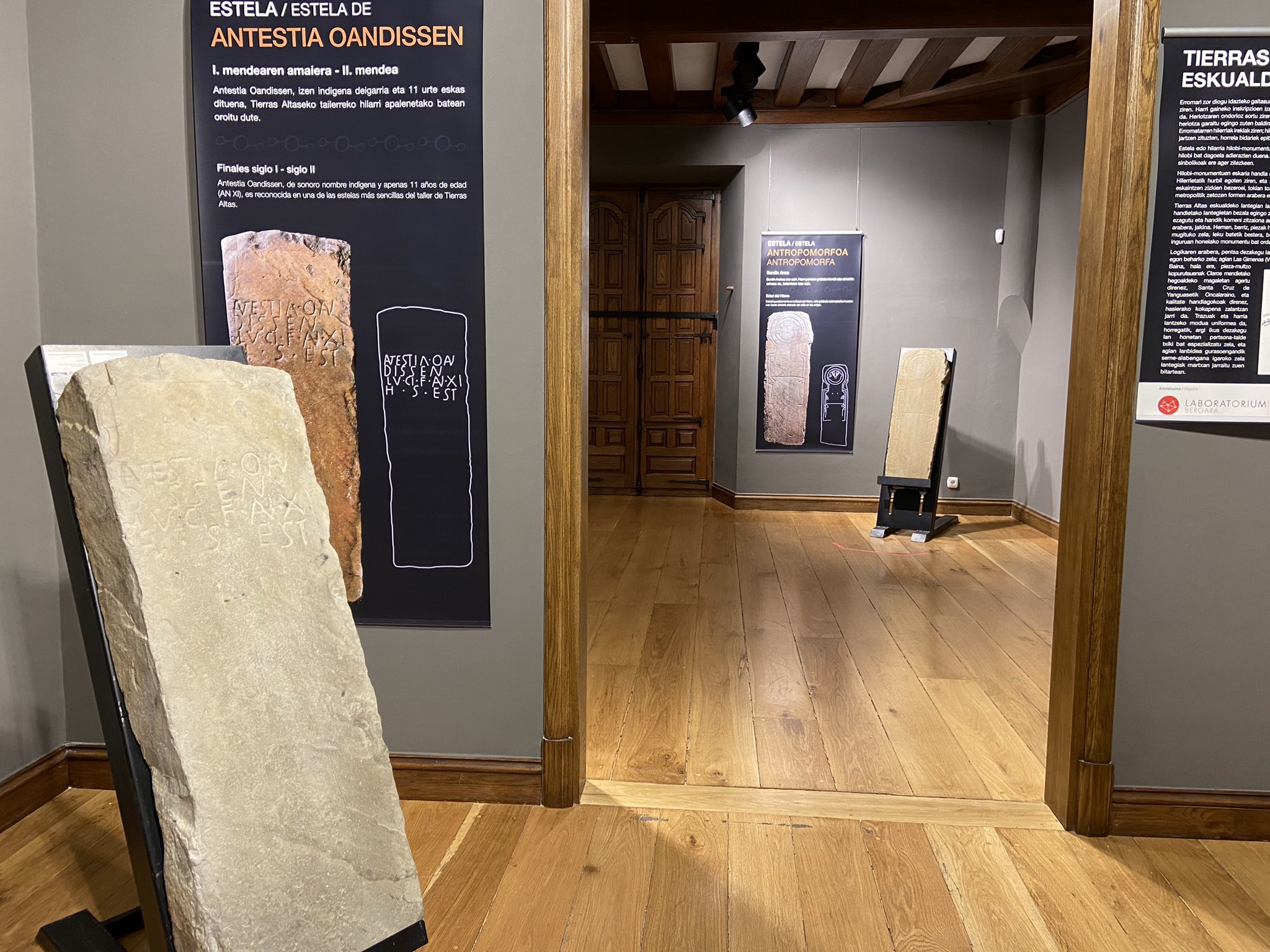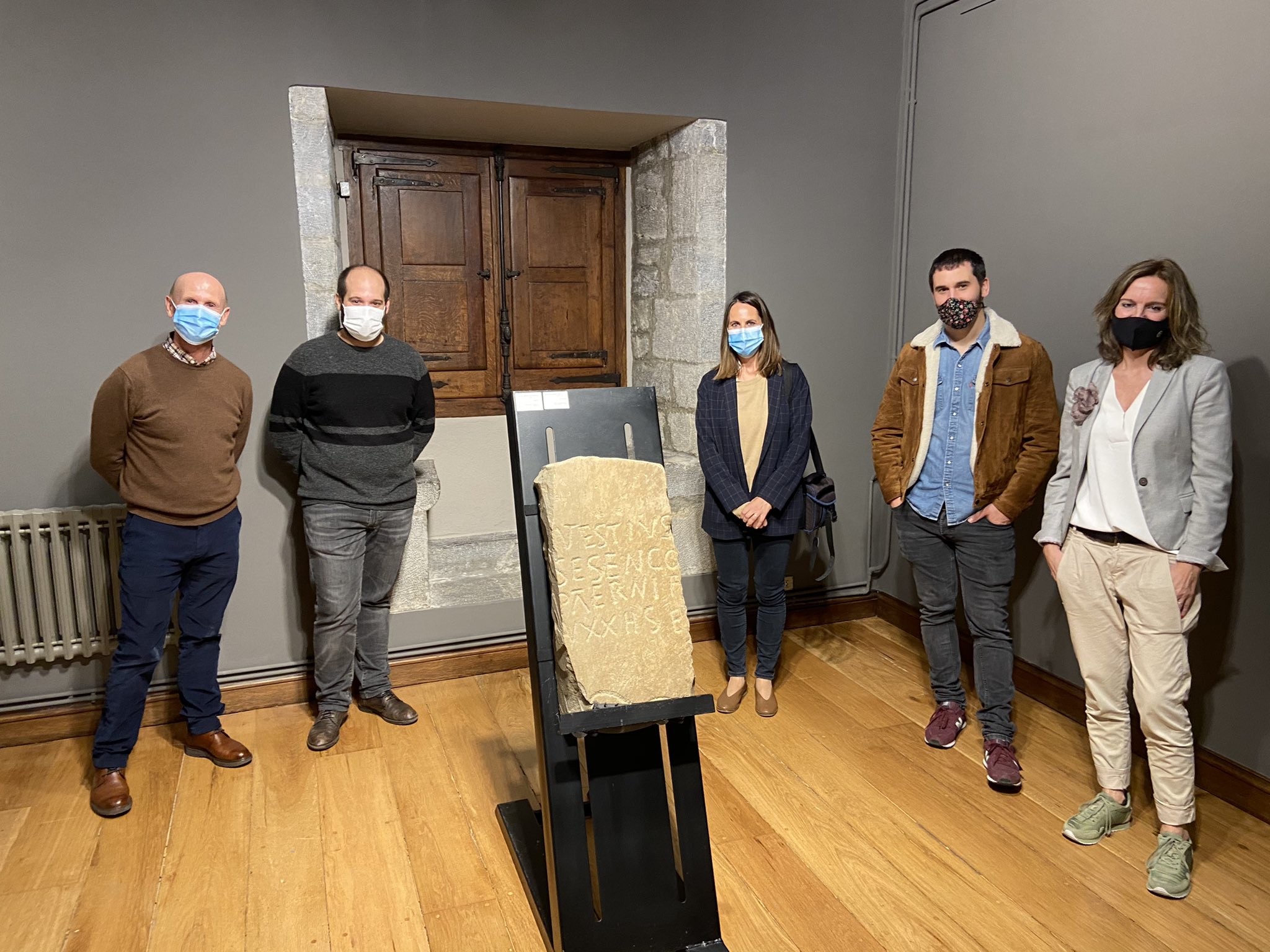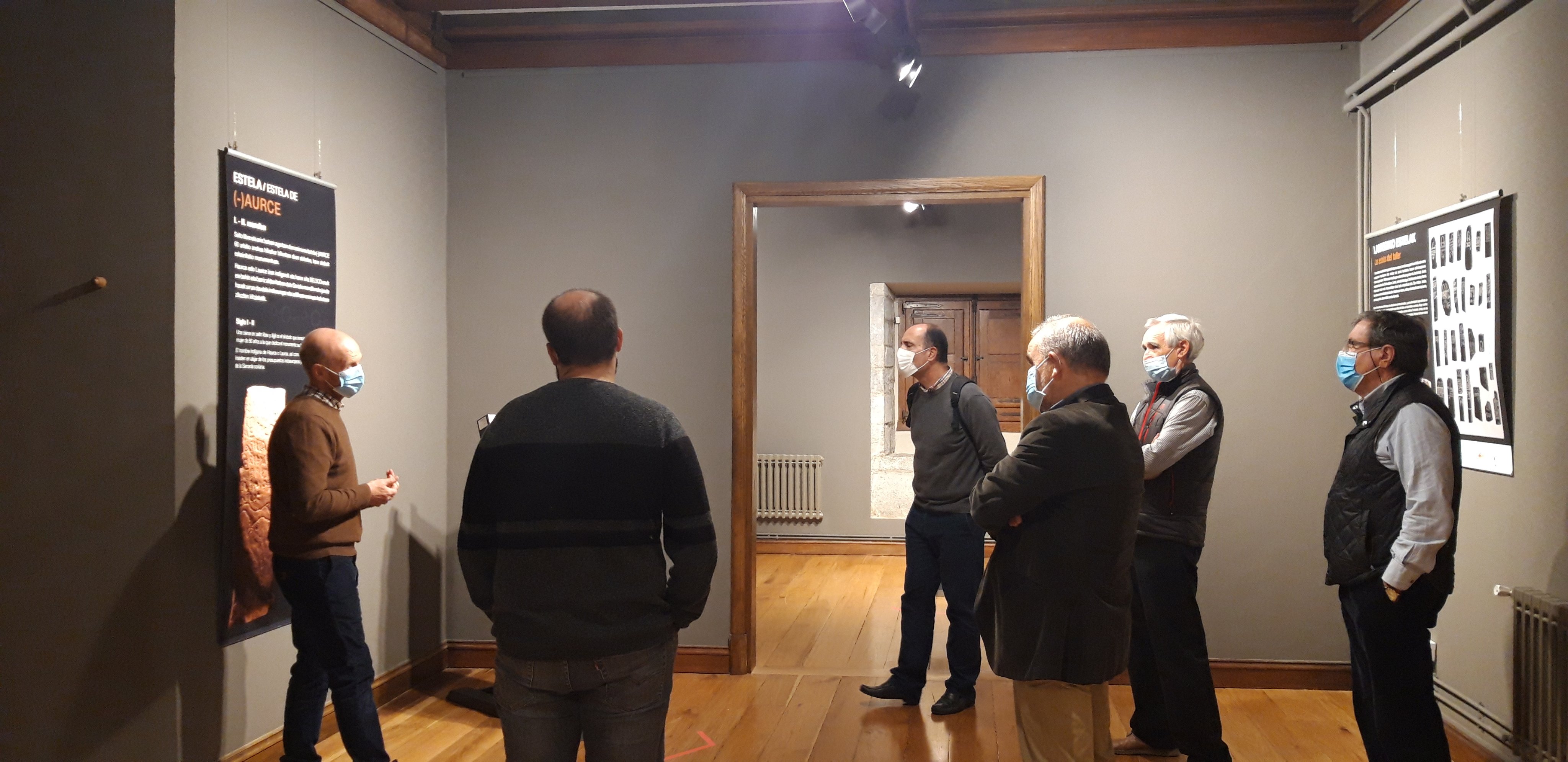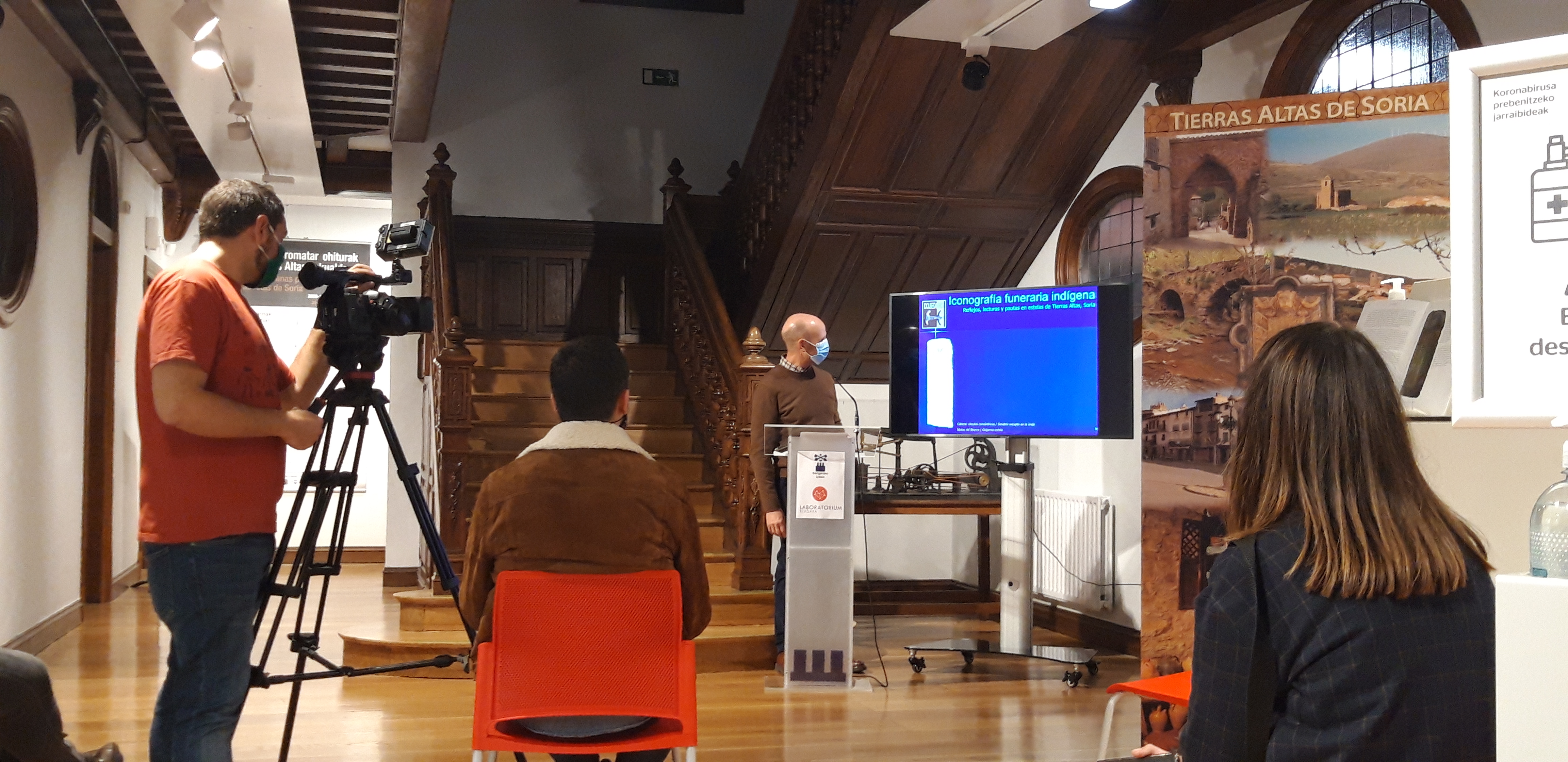LECTURES AND VISIT WITH EDUARDO ALFARO
Eduardo Alfaro, PhD in archeology from the University of Valladolid, curator of this exhibition, has given several lectures at the Laboratorium museum, and will give his last one in January. Attendees will be able to listen to the researcher who knows these stelae best and visit the exhibition before or after the lecture
- January 22, Friday, 17:30h, AT THE Seminarixoa auditorium in Bergara*. AFORO COMPLETO.
Ikusi Seminarixoaren ezaugarriak
GUIDED TOURS IN JANUARY
Now that Eduardo Alfaro's small lectures at the museum have finished, we have organized some guided visits to the exhibition, led by a museum technician, which will take place on these dates:
- 7 January, Thursday
- 5 pm(in basque). DONE.
- 6pm (in spanish). DONE
- 8 January, Friday
- 5pm (in spanish). DONE
- 6pm (in basque). DONE
- 14 January, Thursday
- 5pm (in basque). FULL.
- 6pm (in spanish). FULL.
- 15 January, Friday
- 5pm (in spanish). FULL
- 6pm (in basque).
Advertencia: Guided tours can only be for 6 people, including the guide. The list above is not constantly and immediately updated
Something about the exhibition
Thanks to the stone inscriptions we can get to know something about the people who lived in the first centuries of our era.
A significant number of these documents have been discovered in Tierras Altas de Soria. Written in Latin, they contain, however, Latin personal names, in Celtic and in an ancient form of Basque.
Among the 40 stelae and tombstones found in Tierras Altas from the first to the third centuries, we have gathered six: a representative sample. For the history of the Basque language, that of the Highlands of Soria is undoubtedly a fundamental set, the largest in volume of Basque-Aquitan anthroponymy that can be found south of the Pyrenees.
HIGHLANDS OF SORIA
Tierras Altas or "La Sierra", as it is known by its inhabitants, is located in the northeast of Soria and belongs to the Ebro basin. It is a land of mountains and ravines, which during the Iron Age belonged to the Celtiberian cultural environment. At the end of this stage, during the Romanization, it was incorporated into the province of Citerior Tarraconense, with its capital in Tarraco (Tarragona).
THE INSCRIPTION WORKSHOP
In all the cities and in some rural areas there were inscription workshops. The one in the Highlands specialized in funerary stelae during the 1st and 2nd centuries. This workshop combined local traditions and fashions imported from Rome with a very defined style and repetitive schemes.
These schemes and the elements that compose them have a meaning and a 'raison d'être', something you will discover in this exhibition.
THE PEOPLE OF THE STELAE
The roots of the people of the territory are shown through their indigenous names. Until a little more than a decade ago they were linked to the Iberian sphere. Since then they have been linked to another linguistic space, that of the Basque-Aquitan language, a language or set of languages, ancestor of the current Basque language.
AN EXHIBITION WITH HISTORY
This exhibition was in Santa Cruz de Yanguas, municipality of Tierras Altas in 2019. Now, a representation of it can be visited for two months in Bergara.





